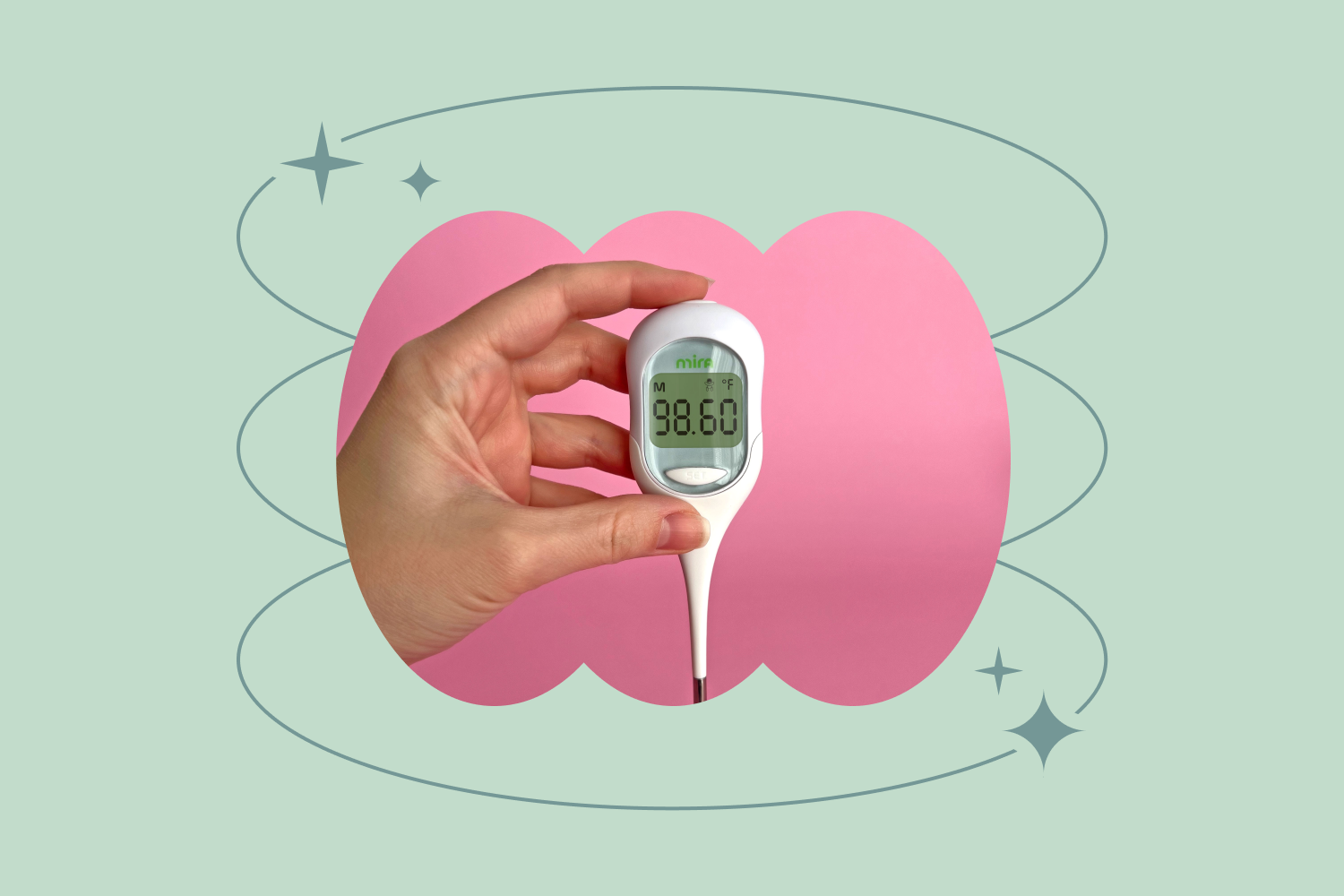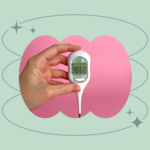Anovulatory Cycle: How to Recognize, Prevent, and Treat It
If you’re planning a pregnancy, you’ll already know that a key milestone in the menstrual cycle is ovulation. But what happens if ovulation doesn’t occur?

This condition is called anovulation, and it occurs when the ovaries do not release an egg (i.e. ‘ovulate’) during the menstrual cycle. Without ovulation, getting pregnant is virtually impossible – so it’s important to make sure that you’re actually ovulating if you are actively trying to conceive (TTC).
To help, we’ll break down everything you need to know about anovulation – including what can cause it, common signs and symptoms, and practical ways to diagnose and monitor anovulatory cycles to achieve your fertility goals.
Key Takeaways
- Anovulation is a common cause of infertility, affecting approximately 30% of infertility cases.
- A number of factors can lead to anovulation, including hormone imbalance, stress, being over/underweight, genetics, and certain medical conditions.
- Anovulation is treatable, with treatment strategies depending on the underlying cause of anovulation.
What Is Anovulation?
Anovulation is the absence of ovulation during the menstrual cycle, meaning an egg is not released from the ovaries.
In a regular ‘ovulatory’ cycle, a sequence of hormone pattern changes stimulate the ovaries to release an egg for fertilization. In an ‘anovulatory’ cycle, ovulation does not occur and therefore an egg is not released.
Without an egg ready for fertilization, it is not possible to conceive during an anovulatory cycle, with doctors estimating that anovulation plays a role in approximately 30% of infertility cases.
Interestingly, an anovulatory cycle can still lead to bleeding that may look similar to a regular period. This can be frustrating because even though it looks like a ‘real’ period, it is technically not the same as normal menstrual bleeding. This anovulatory ‘period’ or ‘bleeding’ leaves many individuals completely unaware that ovulation did not occur.
It’s important to note that anovulation should not be confused with oligoovulation, which is defined as irregular or infrequent ovulation. In cases of oligoovulation, ovulation still happens, however, it can be very difficult to predict and may occur too early or too late in any given cycle.
Causes of Anovulation
Anovulation most commonly occurs among individuals who have just started menstruating and those who are close to menopause. In both of these cases, anovulatory cycles are considered completely normal and not a cause for concern.
Other causes of anovulation include:
- Hormone imbalance. For example, in cases of polycystic ovary syndrome (PCOS), hypothyroidism, and hyperthyroidism.
- Lifestyle. Stress, excessive exercise, poor diet, and being over or underweight can lead to hormone imbalance and anovulation.
- Environment. Environmental factors such as pollution, pesticides, radiation, and exposure to BPA (Bisphenol-A) can disrupt hormone levels and cause anovulation.
- Genetics. Certain medical conditions, such as PCOS, are hereditary in some cases and may cause anovulation.
- Birth control. Hormonal birth control methods (such as the pill, patch, implant, vaginal ring, hormonal IUDs, and injections) are specifically designed to inhibit ovulation to prevent pregnancy.
- NSAIDs (Non-steroidal anti-inflammatory drugs). Research shows that consistent use of NSAIDs, such as ibuprofen, aspirin, and naproxen, can inhibit ovulation.
If you are finding it difficult to get pregnant but your period still appears to be ‘regular’, it’s worth speaking to your doctor. They can help you determine if anovulation is preventing you from conceiving.
Anovulation Symptoms and Signs
Although anovulation can be easy to miss, there are certain signs and symptoms to be aware of. This includes:
- Missed period
- Irregular periods
- Periods that are lighter or heavier than normal
- Lack of cervical mucus
- Difficulty getting pregnant
Other common symptoms of hormone imbalance to watch out for include:
- Acne
- Weight gain
- Hair loss on the top or ‘crown’ of the head
- Excessive hair growth on the face, arms, back and chest
- Low libido
- Insomnia
- Fatigue
For further information on the signs and symptoms of hormone imbalance, check out our article Hormone Imbalance in Women: 17 Signs, Causes & Treatments.
Diagnosing Anovulation
Blood Tests
A blood test at your doctor’s office can reveal a lot about your hormone levels. For example, progesterone can be tested to confirm if ovulation occurred. Your doctor may also want to test prolactin levels, as elevated prolactin levels may affect ovarian functioning and prevent ovulation. Last but not least, a thyroid blood test can provide insights into how your thyroid gland is functioning and whether or not it’s interfering with ovulation.
If you’re not quite ready to make an appointment with your doctor just yet, you can also have your blood tested from the comfort of your home. With Mira’s Panorama Lab Test, you can screen for 5 key biomarkers of fertility – including anti-mullerian Hormone (AMH), thyroid-stimulating hormone (TSH), free thyroxine (fT4), prolactin, and free testosterone. Together, these biomarkers can help paint a picture of your overall reproductive health, providing insight into your hormone balance, ovarian reserve, thyroid functioning, menstrual cycle, and more.
Ultrasound
Regular ultrasound scans can also be used to diagnose anovulation. Over the course of the menstrual cycle, your doctor can use the scans to assess follicular growth and other physical characteristics of ovulation. Blood testing may also be required to track FSH (follicle-stimulating hormone), LH (luteinizing hormone), estrogen, and progesterone levels. Together with the ultrasound scans, your doctor can confirm whether or not ovulation has occurred.
Remember – everyone’s body and medical history is unique. Only your doctor can advise on the best testing method for diagnosing anovulation in your individual situation.
Tracking Anovulatory Cycles
Hormone Tracking
If you suspect that you might not be ovulating, it’s a good idea to start monitoring your cycle and ovulation patterns. One of the best ways you can do this is by tracking your fertility hormones directly with Mira’s at-home hormone monitoring system.
With Mira, you can estimate your full six-day fertile window, predict your day of ovulation, and confirm that ovulation has occurred. This is done by regularly tracking LH, E3G (a metabolite of estradiol), and PdG (a metabolite of progesterone) levels in urine.
It’s important to note that PdG is the key urinary hormone to track if you’re looking to confirm ovulation, with elevated PdG levels in the second half of the cycle indicating that ovulation has likely occurred.
After tracking your hormone levels over a few cycles, you can begin to see your unique hormone patterns and determine whether or not you’re ovulating regularly or at all. You can then take this information to your doctor for further assessment and support.
BBT Tracking
Another biological marker you can track to monitor ovulation is your basal body temperature (BBT).
BBT is simply your body’s temperature when it is at rest. Around ovulation, there is a noticeable rise in BBT that can only be detected with a BBT thermometer. After tracking BBT for several cycles, you can see whether or not your body’s BBT levels show patterns consistent with ovulation. If not, this may be a sign that your body is not ovulating.
Cervical Mucus Tracking
Cervical mucus changes in color, volume, and consistency throughout the menstrual cycle. Around ovulation, it is best described as having the look and feel of raw egg whites. Tracking even the slightest changes in cervical mucus and paying attention to any ‘ovulation discharge’ can help you assess whether ovulation has occurred.
To learn more about tracking cervical mucus, check out our article Cervical Mucus During Ovulation: Look, Feel, Consistency.
Anovulation Treatment Options
Medication
In most cases, anovulation can be treated. In terms of medications, doctors may prescribe certain drugs such as metformin, letrozole, and clomiphene citrate (sometimes marketed as Clomid). Metformin can help balance hormones, while letrozole and clomiphene can help to induce ovulation.
In addition to medication, certain supplements can also help to promote hormone balance. For example, Mira’s own PCOS Supplements are specially formulated to promote cycle regularity and balance hormone levels.
Lifestyle Changes
In general, making positive lifestyle changes can also help balance your hormones and regulate ovulation. This includes:
- Maintaining a healthy, nutrient-rich diet
- Moving your body with regular exercise
- Minimizing stress levels
- Getting at least 7+ hours of sleep each night
- Minimizing alcohol and tobacco consumption

If you are struggling to maintain a balanced lifestyle while also navigating your hormone health, you may benefit from having some extra support from a fertility coach. For example, Mira’s own hormone health coaches can assess your hormone data, lifestyle, and fertility-tracking habits. They then provide practical guidance and moral support to help you achieve your fertility goals.
Other Medical Interventions
In rare cases, medical interventions such as surgery may be necessary to restore ovulation. For example, among PCOS patients, laparoscopic ovarian drilling can be done to help promote ovulation. This is a minor surgery and is often recommended in cases where medication has not worked.
Final Thoughts
If you are TTC, understanding whether or not your body ovulates regularly is absolutely crucial for planning a pregnancy.
If you’re not quite sure about if (or when) your body ovulates, at-home cycle tracking solutions such as Mira’s hormone monitoring system or BBT monitoring can empower you to get to know your cycle better. You can then use this information to have more informed discussions with your doctor or fertility specialist.
Frequently Asked Questions
How do you define ovulating?
Ovulation is defined as the part of the menstrual cycle where an egg is released from the ovaries. Once released, it then makes its way down the uterine tubes where it can be fertilized by a sperm.
What is anovulatory bleeding?
Anovulatory bleeding is a phrase often used to describe a menstrual cycle where ovulation has not occurred but what appears to be a period has occurred. This is why anovulatory cycles can be so confusing, as many individuals think that their menstrual cycle is regular even though they are not ovulating.
When do women ovulate?
In general, ovulation typically occurs midway through the menstrual cycle. However, every cycle is unique and it is considered normal to ovulate anytime between days 6 to 21 of the menstrual cycle.
How to know when you are ovulating?
There are multiple methods you can try at home to track ovulation. This includes the calendar method, BBT method, cervical mucus method, and direct hormone tracking with Mira.
Why am I not ovulating?
There are several factors that can interfere with our body’s ability to ovulate. For example, individuals who have just started menstruating and those who are close to menopause may not ovulate regularly or at all. Coming off of birth control and experiencing pregnancy loss are also associated with irregular ovulation.
Other factors that may prevent ovulation include hormone imbalance, stress, poor diet, being over/underweight, and frequent use of NSAIDs.
Why am I not ovulating but having periods?
Even if ovulation has not occurred, the endometrium may still shed and lead to bleeding. This may look like a ‘normal’ period but it is technically not the same as normal menstrual bleeding.
Can you get pregnant without ovulation?
No. It is not possible to conceive without ovulation. During ovulation, an egg is released from an ovary into the uterine tube for fertilization. Without an egg available, there is nothing for sperm to fertilize and conception cannot occur.
However, there are many treatments available that can help stimulate ovulation. To learn more, check out our article 7 Ways to Increase (or Encourage) Ovulation Naturally.
Mira’s Editorial Process
All content produced by Mira meets stringent editorial standards, ensuring excellence and accuracy in language and medical precision. Every piece undergoes thorough fact-checking and review by qualified professionals. Check out our full editorial process to learn more.








